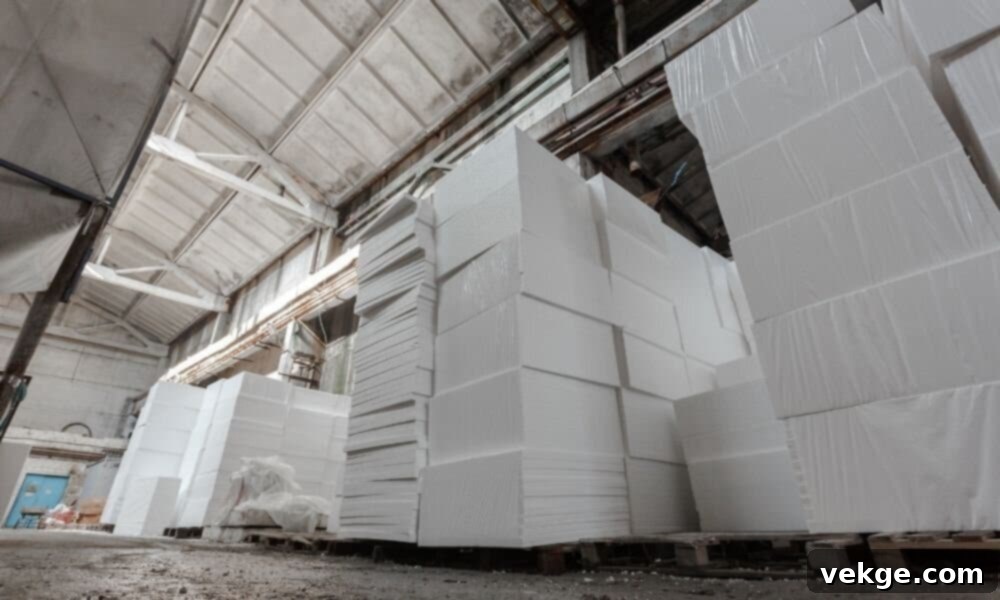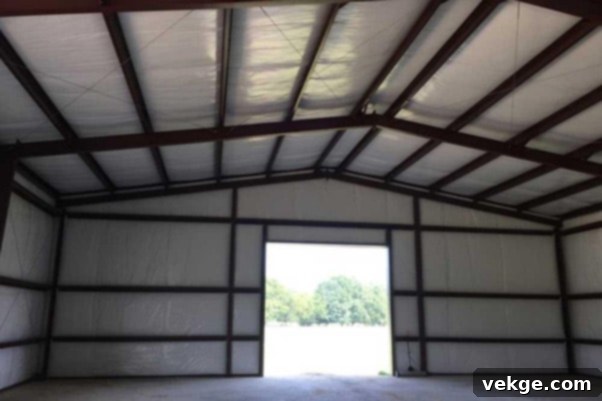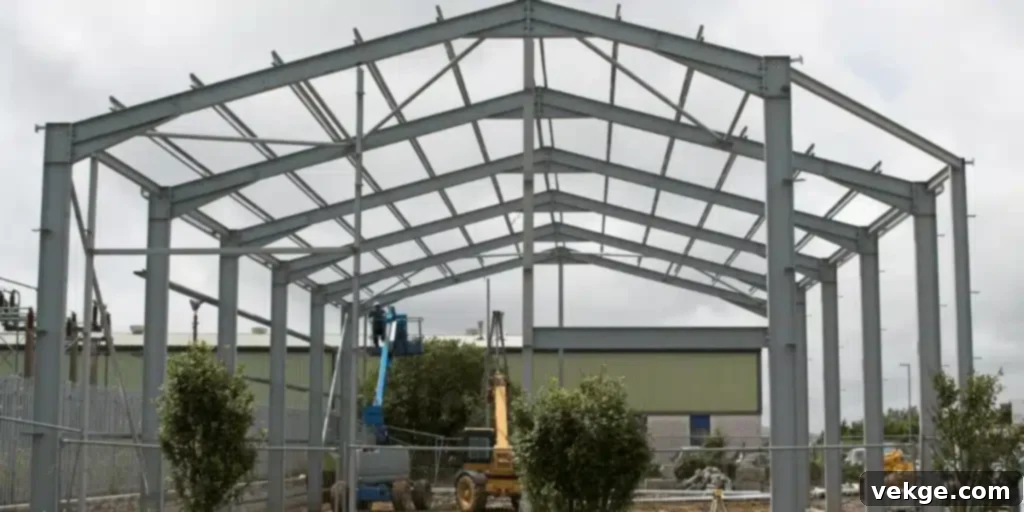The Ultimate Guide to Metal Building Insulation: Science, Materials, and DIY Tips for Optimal Efficiency
While insulation might not always be the most glamorous topic, understanding its fundamental science is absolutely essential for anyone looking to maximize the efficiency, comfort, and longevity of their metal building. Properly insulated metal structures offer significant benefits, from substantial energy savings to improved indoor environments. This comprehensive guide will break down the key scientific concepts behind insulation, explore a range of materials suitable for metal buildings, and provide practical advice for successful installation, whether you’re a seasoned DIYer or considering professional help.
The Foundational Principles: Understanding Heat Transfer
Before we delve into the specifics of insulation materials and their applications, it’s crucial to grasp the basic mechanisms by which heat moves from one place to another. There are three primary ways heat travels: conduction, convection, and radiation. Understanding these principles is paramount to appreciating how insulation effectively regulates temperature in metal buildings, preventing unwanted heat gain in summer and heat loss in winter.
Conduction: Heat Through Solid Materials
Conduction occurs when heat energy travels directly through a solid material from a warmer area to a cooler one. Imagine touching a hot pan; the heat transfers directly to your hand through conduction. Metal, being an excellent conductor of heat, poses a unique challenge for metal buildings. Without proper insulation, the metal shell of a building can rapidly transfer heat from the scorching summer sun indoors, or equally quickly allow warmth to escape during cold winter months. Insulation materials are designed to have low thermal conductivity, meaning they resist the flow of heat through them.
Convection: Heat Movement Through Fluids
Convection involves the movement of heat through fluids, such as air or water, as they circulate. In a building context, this often refers to air currents. Warm air, being less dense, rises, while cooler, denser air sinks. This creates a natural circulation pattern. If a building has gaps, cracks, or insufficient sealing, warm air can escape, and cold air can infiltrate (or vice versa), leading to significant heat loss or gain. Insulation, especially air-impermeable types like spray foam, plays a critical role not just in resisting conductive heat transfer but also in minimizing convective heat loss/gain by sealing air leaks and preventing air movement within wall or ceiling cavities.
Radiation: Heat Via Electromagnetic Waves
Radiation is the transfer of heat through electromagnetic waves, similar to the warmth you feel from the sun or a fireplace. Unlike conduction and convection, radiation doesn’t require a medium for heat transfer; it can travel through a vacuum. In metal buildings, radiant heat from the sun can significantly warm the roof and walls, which then radiate that heat into the interior. Reflective insulation and radiant barriers are specifically designed to combat this. They work by reflecting radiant heat away from the building in hot climates or back into the building in cold climates, rather than absorbing and transferring it. This is particularly effective in preventing direct solar heat gain through the metal roof and walls.
Choosing the Right Armor: Insulation Materials and Their Properties

With a solid understanding of heat transfer, let’s explore the diverse range of insulation materials available for metal buildings. Each type possesses unique properties, benefits, and ideal applications. Selecting the right material is crucial for achieving optimal thermal performance.
Key Insulation Properties: R-value and Thermal Conductivity
Two critical factors to consider when evaluating insulation are its R-value and thermal conductivity.
- R-value: This measures an insulation material’s thermal resistance – its ability to resist heat flow. The higher the R-value, the better the insulation’s ability to reduce heat transfer. R-values are typically expressed per inch of thickness, and building codes often specify minimum R-values for different climate zones and building components (walls, roofs).
- Thermal Conductivity (k-value): This property indicates how quickly heat can move through a material. It’s essentially the inverse of R-value; materials with low thermal conductivity make good insulators. Understanding this helps explain why dense materials like metal conduct heat quickly, while lightweight, air-trapping materials like fiberglass resist it effectively.
Common Insulation Types for Metal Buildings
The options for insulating metal buildings are extensive, each offering distinct advantages:
- Fiberglass Batt and Roll Insulation: Often the most common and cost-effective choice, fiberglass consists of fine glass fibers spun into flexible mats. It works by trapping tiny pockets of air, which significantly impedes heat transfer. It’s available in various thicknesses and R-values and is relatively easy to install. However, fiberglass requires a vapor barrier in most applications to prevent moisture accumulation and is susceptible to performance loss if compressed or wet.
- Spray Foam Insulation (Open-Cell and Closed-Cell): This type of insulation is applied as a liquid and expands to fill cavities, creating an airtight seal.
- Open-cell spray foam is less dense, more flexible, and allows water vapor to pass through. It provides excellent air sealing and sound dampening.
- Closed-cell spray foam is denser, more rigid, and acts as a vapor barrier itself. It offers higher R-values per inch and adds structural strength to the building envelope. Both types excel at conforming to irregular surfaces and eliminating thermal bridging.
- Rigid Board Insulation: These are pre-formed panels made from materials like expanded polystyrene (EPS), extruded polystyrene (XPS), or polyisocyanurate (polyiso). They offer high R-values per inch, are easy to handle, and can be used on walls, roofs, and even under slabs. They provide a continuous layer of insulation, helping to prevent thermal bridging through framing.
- Reflective Insulation and Radiant Barriers: These materials consist of highly reflective surfaces, often aluminum foil, combined with a core of air bubbles or foam. They work by reflecting radiant heat rather than absorbing it. Radiant barriers are typically installed in attics or beneath roofs to block heat from radiating downward into the living space, particularly effective in hot climates. Reflective insulation can also incorporate low-emissivity (low-e) coatings to further reduce radiant heat transfer.
- Mineral Wool Insulation: Made from molten rock or slag spun into fibers, mineral wool offers excellent thermal performance, superior fire resistance, and good soundproofing qualities. It’s often used in commercial or industrial metal buildings where these properties are critical.
The Rewards: Energy Efficiency and Beyond
So, why does understanding the science behind insulation truly matter? The immediate and most tangible benefit is a dramatic improvement in energy efficiency. By carefully selecting the right insulation materials, ensuring proper installation, and minimizing thermal bridging (heat loss through structural elements), you can create a building envelope that effectively regulates temperature year-round.
This heightened energy efficiency translates directly into lower heating and cooling costs, providing significant financial savings over the lifespan of your metal building. But the benefits extend far beyond your utility bill:
- Enhanced Comfort: A well-insulated building maintains a more stable indoor temperature, eliminating uncomfortable hot and cold spots and reducing drafts. This creates a much more pleasant and productive environment.
- Reduced Carbon Footprint: Lower energy consumption means fewer greenhouse gas emissions, contributing to a more sustainable future and helping you meet environmental goals.
- Moisture and Condensation Control: Proper insulation, combined with an effective vapor barrier, helps prevent condensation within wall and roof cavities. This protects against mold growth, rot, and corrosion of the metal structure, prolonging the building’s life.
- Improved Acoustic Performance: Many insulation types, especially fiberglass, mineral wool, and open-cell spray foam, also offer excellent sound dampening properties. This is invaluable in metal buildings, which can often be noisy due to rain, wind, or internal operations.
- Increased Property Value: An energy-efficient and comfortable building is a more attractive asset, often commanding a higher resale value.
For high-quality insulation solutions specifically designed for metal buildings, consider exploring options from reputable suppliers. BlueTex Insulation, for instance, offers specialized products and you can often request a free sample on their website to assess their material quality firsthand.
DIY Metal Building Insulation: A Feasible Project?

The prospect of insulating your own metal building can be appealing, especially for those looking to save on labor costs. Specialized DIY insulation kits are readily available, designed to simplify the process for homeowners and small business owners. However, the “ease” of installation is subjective and depends heavily on several critical factors. Before committing to a DIY route, it’s essential to honestly assess your skills, resources, and the specific demands of your project.
Your Experience Level: A Realistic Assessment
Your existing DIY skills and confidence are arguably the most crucial elements to consider when undertaking a metal building insulation project. If you’re accustomed to tackling home improvement tasks, comfortable using various tools (cutting knives, staple guns, safety gear), and adept at following detailed instructions, then insulating your metal building could be a rewarding way to save money. These projects often involve precise measurements, careful cutting, proper sealing, and safe handling of materials, all of which benefit from prior experience.
However, if you’re new to DIY or feel hesitant about the complexities involved, it might be more prudent to consult or hire a professional. Incorrect installation can significantly compromise the insulation’s effectiveness, leading to wasted materials, ongoing energy losses, and potential issues like condensation. Remember, self-education is always an option; you can gain confidence by watching tutorials, reading manuals, and perhaps starting with smaller, less critical insulation tasks before tackling the entire building. Safety is paramount, so ensure you understand and use all necessary personal protective equipment (PPE) like masks, gloves, and eye protection.
The Time Commitment: Patience is Key

Insulating a metal building, especially a large one, can be a time-consuming project. It’s often more involved than people initially anticipate. You need to realistically evaluate how much time you can dedicate to the task. Rushing through the installation process can lead to mistakes that compromise the insulation’s effectiveness, such as gaps, compression of materials, or improper sealing. These errors can result in significant heat loss or gain, negating your efforts and investment.
Successful DIY insulation requires patience and meticulous attention to detail. Consider your schedule and whether you have the bandwidth to consistently work on the project at a steady pace. Breaking the project down into manageable sections can help, but ensure you allocate sufficient time for preparation, actual installation, and final checks. A well-planned timeline prevents frustration and ensures a high-quality outcome.
The Importance of Your Chosen Kit: Quality and Support
Not all DIY insulation kits are created equal. It is absolutely crucial to thoroughly investigate and select your kit carefully. Some manufacturers excel at providing comprehensive, user-friendly kits with detailed, step-by-step instructions, high-quality materials, and accessible customer support. These kits are often designed with the novice in mind, offering everything from fasteners to vapor barriers tailored for an easier installation experience.
Other kits, however, might assume a certain level of existing expertise or come with less detailed guidance, potentially leading to confusion or errors. When researching kits, look for:
- Clear, Detailed Instructions: Are they easy to understand? Do they include diagrams or videos?
- Material Quality: Is the insulation durable? Does it meet the R-value requirements for your climate zone? Is a vapor barrier integrated or supplied separately?
- Completeness: Does the kit include all necessary components like tape, fasteners, and cutting tools (if applicable)?
- Customer Support: Is there a hotline or online resource for questions that arise during installation?
- Customer Reviews: Read feedback from other DIYers. What were their experiences regarding ease of installation, material quality, and overall performance?
Taking the time to research thoroughly and read customer feedback will significantly increase your chances of a successful DIY insulation project, ensuring you choose a kit that aligns with your skill level and project needs.
Common Insulation Challenges in Metal Buildings and How to Overcome Them
Metal buildings present unique challenges when it comes to insulation, primarily due to their conductive nature and potential for air leakage. Being aware of these issues allows for proactive solutions.
- Condensation: A major concern in metal buildings. When warm, moist air inside the building comes into contact with a cold metal surface, it can condense, leading to water droplets. This moisture can cause rust, mold, and degrade insulation performance. A critical component of any insulation system for a metal building is a robust vapor barrier (also called a vapor retarder) properly installed on the warm side of the insulation to prevent moisture migration. Good ventilation also plays a role in managing humidity.
- Thermal Bridging: Metal framing members (girts, purlins) are excellent conductors of heat. If insulation is only placed between these members, heat can easily bypass the insulation by traveling directly through the metal, creating “thermal bridges.” To mitigate this, consider using continuous insulation (CI) on the exterior of the framing or employing thermal breaks (materials with low conductivity) between the metal structure and the exterior cladding. Spray foam insulation also helps by wrapping around the framing.
- Air Leakage: Gaps and cracks in the building envelope, particularly around doors, windows, and seams, allow unconditioned air to infiltrate or escape. This undermines the best insulation efforts. Air sealing, using caulks, sealants, and expanding foams, is a vital step before or during insulation installation to create an airtight building.
Maximizing Your Insulation Investment: Tips for Long-Term Performance
To ensure your insulation provides optimal performance and durability, consider these additional tips:
- Proper Installation Techniques: Always follow manufacturer guidelines precisely. Ensure insulation is not compressed, as this significantly reduces its R-value. Cut materials accurately to fit cavities snugly without gaps. Seal all seams and penetrations diligently.
- Integrate a Vapor Barrier: As mentioned, this is crucial for metal buildings. Ensure it’s continuous and free of tears or punctures.
- Consider Ventilation: Proper ventilation works in tandem with insulation to control humidity and prevent heat buildup in attics or roof cavities.
- Regular Inspections: Periodically check your insulation for any signs of damage, settling, or pest intrusion. Address any issues promptly to maintain efficiency.
- Professional Consultation: For complex projects, specific climate challenges, or if you’re uncertain about the best approach, don’t hesitate to consult with an insulation professional. Their expertise can save you time, money, and headaches in the long run.
Conclusion: A Comfortable, Efficient, and Sustainable Future
And there you have it – a comprehensive look into the science, materials, and practical considerations behind insulating metal buildings. By understanding the fundamental principles of heat transfer, carefully selecting the right insulation materials for your specific needs, and adhering to proper installation techniques, you are empowered to create a space that is not only exceptionally comfortable and highly energy-efficient but also environmentally friendly and durable.
Whether you are embarking on the construction of a brand-new metal structure or contemplating a retrofit for an existing one, the knowledge gained here will serve as a valuable foundation. Investing in quality insulation is an investment in your building’s future, ensuring lower operating costs, enhanced occupant comfort, and a significant contribution to sustainability. Put your newfound knowledge to good use and build a better, smarter metal building today.
